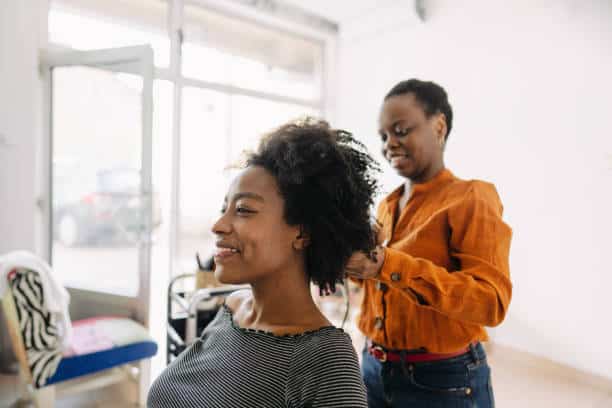
Hair loss affects many Black women throughout their lives, whether due to traction alopecia, hormonal changes, genetics, or chronic styling damage. The emotional toll can be deeply felt: decreased self-esteem, anxiety, shame, and even identity loss. Fortunately, a new wave of treatments—PRP (platelet-rich plasma), micro-fat (or micofat/adipose), and minoxidil (both topical and oral)—provides promising options tailored to textured hair. But with conflicting reports, cost considerations, and potential side effects, Black women are demanding clarity: Which hair regrowth procedure truly delivers?
Comparing Efficacy: What the Research Shows for Us
PRP (Platelet-Rich Plasma)
PRP therapy draws a patient’s own blood, isolates growth-factor-rich platelets, and injects them into the scalp to stimulate dormant follicles. Dozens of clinical trials—and systematic reviews—have documented measurable increases in hair density and thickness, especially in androgenetic alopecia (AGA).
- Alves & Grimalt (2018) reported success in 10 of 12 AGA studies, with significant improvements in density and hair count.
- A 2020 meta-analysis concluded PRP to be a safe and effective alternative to minoxidil and finasteride.
- Some randomized controlled trials (RCTs) favored PRP over minoxidil, showing greater increases in hair shaft length (>10 mm in 100% of PRP patients vs. 20% in control groups).
A 2021 Frontiers review confirms PRP boosts objective measures—density, pull test, thickness—and yields high patient satisfaction. Another three-case series combining PRP with micro-fat injections showed sustained gains in thickness up to one year.
Importantly, clinical practice in Black women—often facing central centrifugal cicatricial alopecia (CCCA) or traction alopecia—shows PRP can meaningfully improve density and hair count, particularly for non-scarring conditions.
Micro-Fat / Micrograft (Adipose)
Micro-fat grafting uses tiny fat injections (micrografts) to deliver growth factors and stem cells that promote scalp regeneration. Although research is more limited, early trials show promising results:
- A 2022 study on autologous cellular micrografts (for men and women) reported improvements in hair density and thickness, though follow-up was short-term.
- The PRP–microfat combo (sometimes called PHAT or PRP hybridized adipose transplant) demonstrated sustained regrowth in small patient samples.
While less standardized than PRP, micro-fat’s potential lies in added stem cell activity and scaffold support. More large-scale RCTs are needed, but early adopters report success, especially in graft-friendly textured hair.
Minoxidil (Topical & Oral)
Minoxidil remains the only FDA-approved topical solution for AGA in women. It prolongs the anagen (growth) phase and increases follicle size, producing thicker hair.
- Side effects include scalp irritation, increased oiliness, redness, and sometimes unwanted hair growth elsewhere.
- Only about 30% of users see a moderate regrowth after one year.
- Oral low-dose minoxidil (LDOM), though off-label, shows 70–100% response in AGA, with hypertrichosis (extra hair growth) as the most common side effect.
- Among Black women, minoxidil has gone viral on TikTok, with millions of posts showcasing regained edges and concealed alopecia.
Minoxidil’s power lies in accessibility and affordability—but it demands consistent daily use, patience (three to six months to see results), and vigilance against adverse effects.
RELATED: 9 Foods That Have Proven To Supercharge Hair Growth!
Pain, Price & Patience: The Real Cost Breakdown
Cost
- PRP: Typically $500–$1,500 per session; most protocols require a series of three to four monthly treatments, then maintenance every six to 12 months.
- Micro-Fat (with PRP): Costs mirror PRP or slightly higher due to minor liposuction requirements ($1,000–$2,000+ per session).
- Topical Minoxidil: Around $30–$60 per month, with monthly consistent use.
- Oral Minoxidil: Similar cost to topical, but prescribed off-label; requires medical oversight.
Insurance rarely covers PRP or micro-fat. Minoxidil is often out-of-pocket, though it may be cheaper with discount manufacturers.
Pain and Discomfort
- PRP injections involve multiple fine-needle injections; some mild pain and soreness are common. Comfort levels vary, but topical numbing agents can help.
- Micro-Fat procedures include local anesthesia for micro-lipo —slightly more invasive, with minor discomfort and swelling.
- Topical Minoxidil: Non-invasive, but may cause itchiness or burning if the scalp is sensitive.
- Oral Minoxidil: Pills are easy, although systemic effects (such as changes in heart rate, edema, and hair growth elsewhere) may occur.
Time to Results
- PRP: Visible improvements often start at 3–6 months, with full results after 6–12 months; maintenance is essential.
- Micro-Fat/Combo: Similar timeline with sustained density gains; early results may show quicker scalp coverage due to grafting.
- Topical Minoxidil: Gradual; vellus hair first (~3 months), thicker hair ~6 months. Full results typically require a year.
- Oral Minoxidil: Faster onset—within 3–6 months in many cases, but long-term safety data is still evolving.
In short: more invasive = higher cost & discomfort, but potentially faster & stronger results.
What to Ask Your Dermatologist
Being prepared makes all the difference. Here are essential questions to guide your consultation:
- What type of hair loss do I have?
- AGA, traction alopecia, CCCA, telogen effluvium? Each responds differently. CCCA, for example, involves scarring, so regrowth may be limited in permanently damaged areas.
- Which treatments are evidence-based for my hair type and condition?
- PRP has substantial evidence in AGA; micro-fat is emerging; minoxidil is well-studied.
- Ask about combination strategies: e.g., PRP + minoxidil has synergistic effects.
- What is the full treatment plan (sessions, costs, maintenance)?
- Clarify price per session, total number of sessions, and maintenance schedule. Will there be ongoing charges?
- What side effects or risks should I expect?
- PRP: soreness, infection (rare), minimal downtime.
- Micro-fat: bruising, swelling, minor liposuction risks.
- Minoxidil: scalp irritation, unwanted hair growth (oral), systemic side effects.
- Am I a good candidate?
- Scarring conditions may require alternative strategies (e.g., hair transplantation, camouflage). Some dermatologist-stylist integrated clinics (e.g., Kindred Hair & Skin Center in MD) specialize in textured hair care.
- How will my progress be tracked?
- Ask about objective measures (photos, pull tests, densitometry) and how often you’ll revisit.
- What complementary measures do you recommend?
- Lifestyle factors—nutrition, low-tension styling, scalp care—can significantly impact outcomes, especially for Black women on proactive regimens.
RELATED: 4 Hair Growth Treatments That Actually Work

Beyond the Scalp: How These Treatments Affect Mental Wellness
Hair is deeply intertwined with identity and cultural pride for many Black women. Losing hair can lead to shame, anxiety, social withdrawal, and even depression.
Psychological Benefits
- Regaining Control & Confidence
- Visible regrowth—whether through PRP, micro-fat, or minoxidil—can restore self-esteem, reduce anxiety, and improve social engagement.
- Black creators like Chizi Duru have spoken candidly about regaining agency through regrowth and advocating for culturally informed care.
- Supporting Mental Health Through Integrated Care
- Clinics that combine dermatology, salon services, and mental-health resources create a strong support network.
- Support groups—virtual or in-person—build community and reduce isolation during regrowth processes.
- Reducing Hair-Related Anxiety
- Structured treatment plans offer hope and control, helping women avoid hopelessness and “just give up.” When regrowth stalls, having a trusted provider guides adjustments and reduces despair.
- Cultural Resonance Matters
- Black women benefit from care that recognizes textured hair concerns, and when providers have stylist support, treatment adherence and emotional resilience improve.
Real Stories
At Kindred Hair & Skin Center, stylists and dermatologists collaborate daily: they note early shedding, adjust treatment, and use salon time for emotional check-ins. Patients say it’s transformative—not just medically but mentally.
Allure reports cite anxiety, shame, even depression stemming from traction alopecia and CCCA—treatable conditions when addressed early by culturally competent professionals.
Verdict: Which Treatment Wins?
There’s no one-size-fits-all answer, but here’s how each stacks up for Black women:
- PRP: Robust evidence in AGA, traction alopecia; fosters density and thickness; synergizes well with other therapies. Best suited for those who can invest time and funds.
- Micro-Fat / Combo: A biologically rich approach appealing for textured hair; early results are promising, but further research is needed. Expect moderate-to-high cost and commitment.
- Minoxidil (Topical): Most accessible, less invasive; requires daily use and patience; moderate results (30–40% response rate). Good starting point or maintenance tool.
- Low-Dose Oral Minoxidil: Potential for fast results with doctor oversight; systemic monitoring needed.
- Combined Protocols: PRP + minoxidil or micro-fat combo likely delivers the strongest outcome, but costs and commitment scale up.
Patient Priorities
- Quickest visible results? Consider PRP or micro-fat combos.
- Lowest cost/invasion? Start with topical minoxidil.
- Maximizing gains? Combine treatments and complementary care.
Takeaways
- Research-backed efficacy: PRP leads, micro-fat shows promise, minoxidil offers steady results.
- Holistic context matters: Addressing mental wellness, styling habits, and culturally competent care is critical.
- Ask smart questions: Know your hair-loss type, treatment costs, side effects, and companion care steps.
- Support beyond treatments: Community and therapist-stylist integration can be life-saving as much as any serum.
Hair regrowth isn’t just about follicles—it’s about identity, resilience, and reclaiming control. For Black women facing hair loss, these treatments offer hope. Knowing which one aligns with your body, budget, and values is the real victory.









